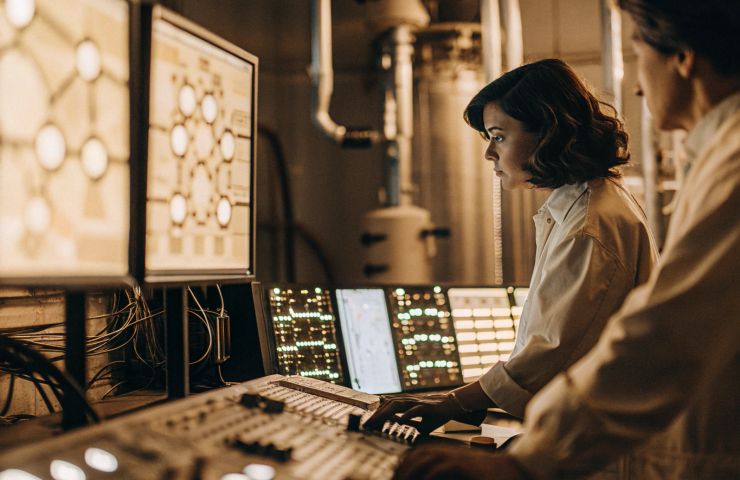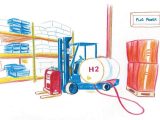
Imperial College London Secures £859k EPSRC Grant to Strengthen Hydrogen Infrastructure
October 24, 2025Imagine this: on 23 October 2025, Imperial College London snagged an £859,000 grant from the Engineering and Physical Sciences Research Council (EPSRC). The mission? To tackle one of the hydrogen sector’s biggest headaches—metal embrittlement—and cook up alloys and composite materials tough enough for high-pressure, cryogenic conditions. This is a big deal for building reliable hydrogen infrastructure across the UK and beyond.
- Grant & Purpose: £859k to tackle metal degradation in hydrogen environments.
- National Context: Supports the UK’s ambition for 5 GW of low-carbon hydrogen by 2030.
- Tech Focus: Designing embrittlement-resistant alloys and Carbon Fibre Reinforced Polymers (CFRP) composite linings.
- Modeling & Testing: Cutting-edge simulations, high-pressure cycles and cryogenic trials.
- Safety & Durability: Curbing crack growth to extend pipeline and vessel lifespans.
- Economic Impact: Slashes maintenance costs, de-risks investments and bolsters confidence in clean hydrogen.
Unpacking the Technical Approach
If you’ve ever worked with hydrogen systems, you know metals like steel and aluminum can turn brittle once hydrogen atoms sneak into their lattice. By tweaking the alloy recipe—think finely tuned precipitates or novel reinforcement phases—we’re basically throwing up roadblocks to stop cracks before they start. Computational models then predict how each alloy performs under extreme pressure and sub-zero temps, and the strongest contenders get real-world mechanical tests in hydrogen-rich environments. It’s this kind of rigor that drives next-level hydrogen storage solutions.
On the composite side, Carbon Fibre Reinforced Polymers (CFRP) are under the microscope as inner linings or even vessel shells. They not only curb permeability but also pack a punch in strength-to-weight ratio. Data from pressure-and-temperature cycling rigs feeds directly back into our models, letting us fine-tune designs on the fly and keep development costs in check.
Strategy and Sector Impact
This EPSRC boost plugs right into the UK’s clean hydrogen game plan, aiming for 5 GW of low-carbon output by 2030—enough to power over three million homes. Beating embrittlement isn’t just a lab win; it’s essential for pipelines, pressure vessels and refuelling stations. More durable materials mean cheaper insurance, faster rollouts and sky-high investor confidence in hydrogen as a genuine sustainable energy contender.
And here’s the kicker: success could spark new UK-based supply chains—from specialty alloy smelters to composite fabricators—creating high-skilled jobs and positioning Britain as a global exporter of hydrogen and the materials powering it.
A Century-Long Challenge
Hydrogen embrittlement has haunted engineers for over a hundred years. Early ammonia pipelines and WWII-era rocket fuel lines revealed how micro-cracks driven by hydrogen could morph into catastrophic failures. Despite leaps in metallurgy, embrittlement still caps metal use in modern hydrogen networks. With the push for industrial decarbonization back in full swing, funding’s amped up—making this project’s timing spot-on to finally deliver robust, zero-emission technology.
Collaborations and Next Steps
Imperial College London isn’t going it alone. They’re teaming up with pipeline makers, alloy suppliers and composite specialists to fast-track prototype testing. Partnerships with the Henry Royce Institute and RILEM bring in top-tier characterization facilities and expert standards guidance. Up next: scale-up trials and standardization workshops to smooth the journey from lab bench to field deployment.
Looking Beyond the Lab
Building tougher, leak-resistant pipelines has ripple effects across industry. Safer corridors slash environmental risks, while reliable vessels speed hydrogen uptake in power generation, transport and heavy industry—cornerstones of industrial decarbonization. Performance data from this work will feed into new regulatory codes, paving the way for widespread hydrogen networks and drawing global attention.
In the end, this £859k EPSRC investment is more than just funding—it’s a catalyst for the materials that will carry the hydrogen future. If everything lines up, we’ll see a real transformation in how we store, move and use hydrogen, bringing us closer to a world powered by truly zero-emission technology.



 With over 15 years of reporting hydrogen news, we are your premier source for the latest updates and insights in hydrogen and renewable energy.
With over 15 years of reporting hydrogen news, we are your premier source for the latest updates and insights in hydrogen and renewable energy.